Fontys and Fontys ICT
A talent-oriented, research-oriented and agile Fontys. That's what Fontys wants to be in 2025. The 2021-2025 strategic plan focuses on those three goals under the heading Fontys for Society. Anyone comparing the Fontys strategic plan with Fontys ICT will see many similarities. Fontys ICT sees itself as a forerunner and challenger, and therefore does not always see the benefits of Fontys-wide cooperation. Are we at Fontys ICT indeed ahead in everything, or can we also learn from developments within Fontys? We look at this question using the three themes of Fontys for Society.
Talent-oriented
Fontys sees it as its social mission to develop the talent of students, employees and professionals from the region. This requires further development of the educational portfolio, which traditionally focuses on the full-time bachelor's programme. Fontys wants to focus more on the Ad, Master's and education for professionals. For Fontys ICT, 'talent-oriented' is in its DNA; with student-centred education and room for employees to shape their own jobs, Fontys ICT is ahead of the Fontys organisation. One development point is that Fontys ICT also still sees itself, often unconsciously, as a full-time bachelor's organisation. While we have three in-house programmes, the Ad, Bachelor and Master, in both full-time and part-time, and the professional doctorate will hopefully follow soon. There are many opportunities in a greater focus on and appreciation for the associate degree, the master's degree and part-time education in general.
Fontys' strategic plan also sees improving accessibility to education as a development point for a talent-focused Fontys. Guidance and administration before and during studies are important. Fontys ICT is rightly proud of Student+. In the guidance and advice on study choices, the semester coach has a pivotal role, which is becoming increasingly important. Moreover, Fontys wants to strengthen hybrid learning environments. The aim is for every study programme to have a hybrid learning and research environment by 2025. For the full-time ICT bachelor and master, this is the case; for Ad students, Fontys ICT does not offer a hybrid learning environment. And part-time students do work in groups on practical assignments, but at the same time indicate that it is difficult to integrate their jobs into their studies.
Inquisitive
Besides being talent-oriented, Fontys strives to be an inquisitive institution. In the years up to 2025, Fontys aims to strengthen cross-institute multidisciplinary cooperation in research. From this ambition, the centres of expertise (CoE) and knowledge centres (KC) have been established. Fontys ICT is the leader of the Applied AI for Society knowledge centre. Moreover, the three lecturers have all also been appointed leading lecturers: Mark de Graaf of CoE Inclusive Society, Teade Punter of CoE HTSM and Gerard Schouten of KC Applied AI for Society. The interplay between the different levels, the CoE/CCs, the professorships and the research projects that are often intertwined with education, raises questions that are mainly organisational in nature. New roles arise: tasks and responsibilities are allocated differently. This puzzling and finding out together how research can best be organised will still be on the agenda at Fontys ICT in the coming years.
Agile
The third and final spearhead of Fontys for Society is agility. For an agile Fontys, the institutes will retain some of their autonomy, but within the frameworks set by the Executive Board. Moreover, Fontys wants to harmonise and improve its support processes. In order to maintain control over Fontys-wide programmes, the Portfolio Management Office (PMO) has been set up. Finally, Fontys encourages participation in changing coalitions and alliances, which arise at the request of the outside world. Fontys ICT is increasingly making its voice heard in Fontys-wide consultations. As a result, the frameworks largely fall in line with the status quo within Fontys ICT. Yet here and there it pinches. For example, Fontys ICT has built many support systems itself. The advantages of joining Fontys systems are not always (yet) experienced, nor by everyone.
Fontys ICT is launching its new strategic plan at a time when Fontys still has two years of 'Fontys for Society' ahead of it. So far, Fontys ICT ambitions are largely in line with Fontys for Society, and Fontys even seems to follow Fontys ICT on certain aspects, such as talent orientation. What the Fontys strategy from 2026 to 2031 will look like is still guesswork. The trend started seems to be that of more steering; last year three central frameworks were established, the talent-oriented design framework, the testing framework and the quality framework. It is therefore good that Fontys ICT has a seat at many tables, to participate in discussions and help determine Fontys-wide policy. As well as bringing, we can also get: a look behind the scenes at the other 23 Fontys institutes and services is interesting, just as we gain inspiration and knowledge from other (ICT) colleges and universities.
